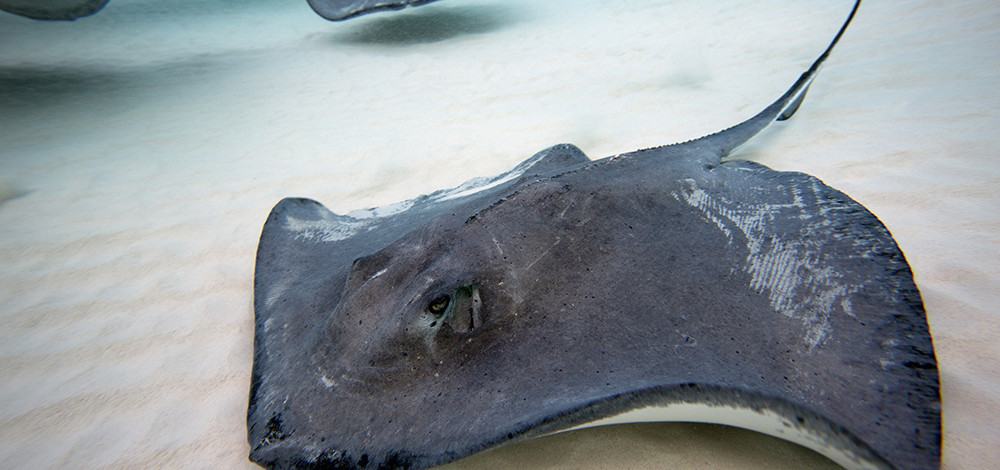History
First sighted by Christopher Columbus 10 May 1503. The small islands were full of tortoises, for which reason these islands were called “Las Tortugas.”
By 1530 the name Caymanas was being used. It is derived from the Carib Indian word for the marine crocodile, which is now known to have lived in the Islands.
The first recorded settlements were located on Little Cayman and Cayman Brac during 1661-71. Because of the depredations of Spanish privateers, the governor of Jamaica called the settlers back to Jamaica, though by this time Spain had recognised British possession of the Islands in the 1670 Treaty of Madrid. Often in breach of the treaty, British privateers roamed the area taking their prizes, probably using the Cayman Islands to replenish stocks of food and water and careen their vessels.
The first census of the Islands was taken in 1802, showing a population on Grand Cayman of 933, of whom 545 were slaves. Before slavery was abolished in 1834, there were over 950 slaves owned by 116 families.
Though Cayman was regarded as a dependency of Jamaica, the reins of government by that colony were loosely held in the early years, and a tradition grew of self-government, with matters of public concern decided at meetings of all free males. In 1831 a legislative assembly was established.
Current Constitutional Status
The constitutional relationship between Cayman and Jamaica remained ambiguous until 1863 when an act of the British parliament formally made the Cayman Islands a dependency of Jamaica. When Jamaica achieved independence in 1962, the Islands opted to remain under the British Crown, and an administrator appointed from London assumed the responsibilities previously held by the governor of Jamaica.
The constitution currently provides for a Crown-appointed Governor, a Legislative Assembly and a Cabinet. Unless there are exceptional reasons, the Governor accepts the advice of the Cabinet, which comprises three appointed official members and five ministers elected from the 15 elected members of the Assembly. The Governor has responsibility for the police, civil service, defense and external affairs but handed over the presidency of the Legislative Assembly to the Speaker in 1991.
Cayman’s 2009 Constitution sets a limit (a certain percentage of government revenue) on the amount of money that Government might borrow. Flexibility is given in urgent or extremely important matters, a facility that Government asked for and the UK’s Foreign and Commonwealth Office granted in 2010.
Cabinet
The Cabinet is composed of two official members and Seven elected members, called ministers; one of whom is designated premier.
The official members are the deputy governor and the attorney general. They are appointed by the governor in accordance with Her Majesty’s instructions, and although they have seats in the Legislative Assembly, under the 2009 Constitution, they do not vote.
The 2009 constitution changed the structure of government. Currently seven ministers are voted into office by 18 elected members of the Legislative Assembly. One of the ministers, the leader of the majority political party, is appointed premier by the governor.
After consulting the premier, the governor allocates a portfolio of responsibilities to each Cabinet member. Under the principle of collective responsibility, all ministers are obliged to support in the Assembly any measures approved by Cabinet.
Almost 80 departments, sections and units carry out the business of government, joined by a number of statutory boards and authorities set up for specific purposes, such as the Port Authority, the Civil Aviation Authority, the Immigration Board, the Water Authority, the University College Board of Governors, the National Pensions Board, and the Health Insurance Commission.
Economy
The main industries are financial services, tourism, and real estate sales and development. Service industries, such as construction, hotel and restaurant operations, retail trades, and scuba diving and boat rentals are ancillary to the main industries. The Cayman Islands Government has never depended on the British Government for its recurrent budget, and all aid for capital projects has ceased for over 20 years.
Fast Facts
| Area |
3 islands, 102 sq. miles total (264 sq. km) |
| Population |
54,397 (2010) |
| Capital |
George Town, population, 27,704 (2010) |
| Currency |
Cayman Islands dollar (CI$) of 100 cents; CI$1 = US$1.20 |
| Flag |
British blue ensign with the arms on a white disc in the fly |
| Life Expectancy |
80.3 years (2008) |
| Infant Mortality |
per 1,000 births, 3.7 (2009) |
| Population Growth Rate |
-2.3 per cent (2010) |
| GDP |
CI$2,335.8 million (2010) |
| Annual Average Growth of GDP |
-4.0 per cent (2010) |
For more information, check the Economics and Statistics Office (ESO) website.

